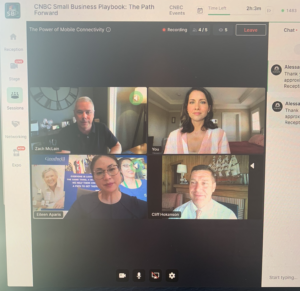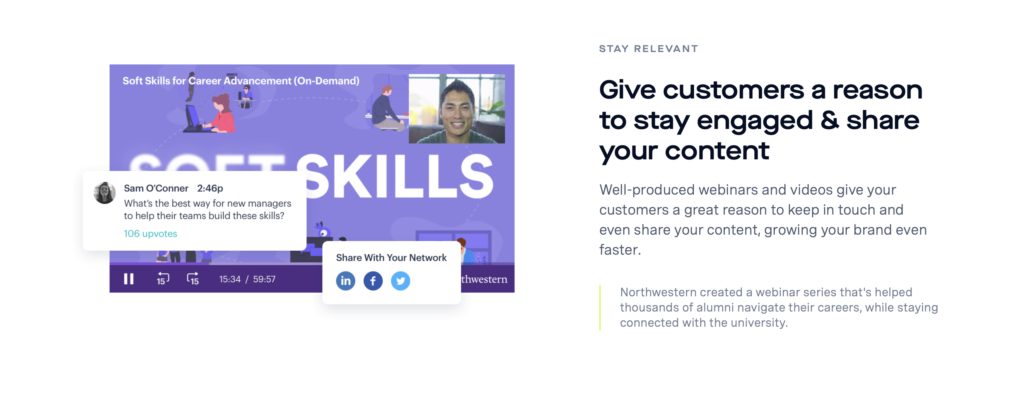The pandemic has forced almost every industry to transform, including the events business. All events are virtual events now. Before 2020, I spent much of my time criss-crossing the country, hosting events for leading organizations. Last year, my business transformed dramatically as events and people were grounded.
Yet, last year was one of the most exciting, rewarding and busy times in my career. I participated with many brands including the Wall Street Journal, CNBC events and SAP, to bring content to audiences online. I have witnessed the shifts big organizations have made to create compelling content using technology, new formats and great talent. Much of this innovation, I believe, will remain even with in-person events returning. Here are some of the themes I believe will continue to define the future of virtual events space:
Shorter, more compact formats

In order to draw audiences to events, the value proposition must be high for content with time commitment at a minimum. Most of the events I have participated in have been 1.5-3 hours in length with concurrent sessions running throughout. If an event is too long, audience members are unlikely to commit to attending the entire event, reducing likelihood of attendance.
Because all sessions are recorded and can be watched at a later time, a packed agenda with a stack of back-to-back speakers is unnecessary. Instead, the most engaging events I have been a part of have book-ended main event speakers at the start and finish of the event. In between, concurrent sessions of 20-40 minutes allow participants to jump around into different sessions, sampling a wide array of content, if desired.
Interactive elements within intimate formats

Creating personal connections inside a Zoom room with thousands of attendees is impossible. Instead, leading companies are playing with smaller audience sizes to create intimacy and to foster networking opportunities, a desire of most attendees at an in-person conference.
Concurrent sessions are a great way to do this. Some of the most engaging conversations I have been a part of have been inside a room with limited attendees. With caps, the host, panelists and audience members can more easily foster dynamic conversations and share personal learnings.
Curated “happy hour” rooms and dedicated time for mingling in between sessions provide additional ways to for your audience to connect.
Every conference event I host also always solicits audience participation. In fact, participants expect to be involved. This can be done through polls, a sidebar chat, interactive Q&A discussions and even through assessments or quizzes completed before the event. Call to actions are key.
Content and speakers tailored for your event
Audiences will show up to see compelling speakers that educate, inspire and engage. But, online events have to also contend with participants with lower attention spans and competing priorities. Selecting speakers, panelists and moderators who bring dynamic energy to their presentations is key in hooking audiences. When I give a presentation, I limit my talk to 10 minutes or less and include more visual elements than I normally would on the stage. I bring in “TV energy.” That’s needed in panels, as well. Panels I lead are often under 20 minutes now and include 7-9 minutes of dedicated Q&A, graphics and other produced elements. I find that on panels with 3 or fewer participants, I can lead more in-depth conversations.
Broadcast quality production + data as a bonus

Though it can be costly and require prep time for event hosts, the right platform can elevate an online event. Since most of us spend our days in a standard interface made by Cisco, Microsoft or Zoom, changing up the production “wrapper” of your event gives the audience a needed visual and mental change. Added tools and production support create a superior experience that drive your brand and prevent snafus during a live event. Hopin, Splash and Big Marker are a few examples of virtual event platforms. They provide event templates and custom designs so your virtual venue matches your branding standards. These platforms also deliver huge value with the data they provide. According to Hopin’s website, you can analyze everything from session participation, chat, booth attendance, feedback and more to drive more impactful events in the future.
As a host and speaker, I prefer the thrill of a live event. But, often, taping events is more practical for many companies. When doing so, be sure to work with a production company to create a professional “look-live” event. It creates a much better product. The excitement that is lost from not going live will be forgotten once your viewers see a high quality, edited and professional video segment.
Even with in-person events returning, audiences’ standards have been reset and raised by this lost year in the pandemic. Whether virtual or not, creating compelling, dynamic and value-driving events are a must for any event, no matter the venue.
If teams could only find a way to bring swag bags to their audiences, then virtual events provide the full conference experience.